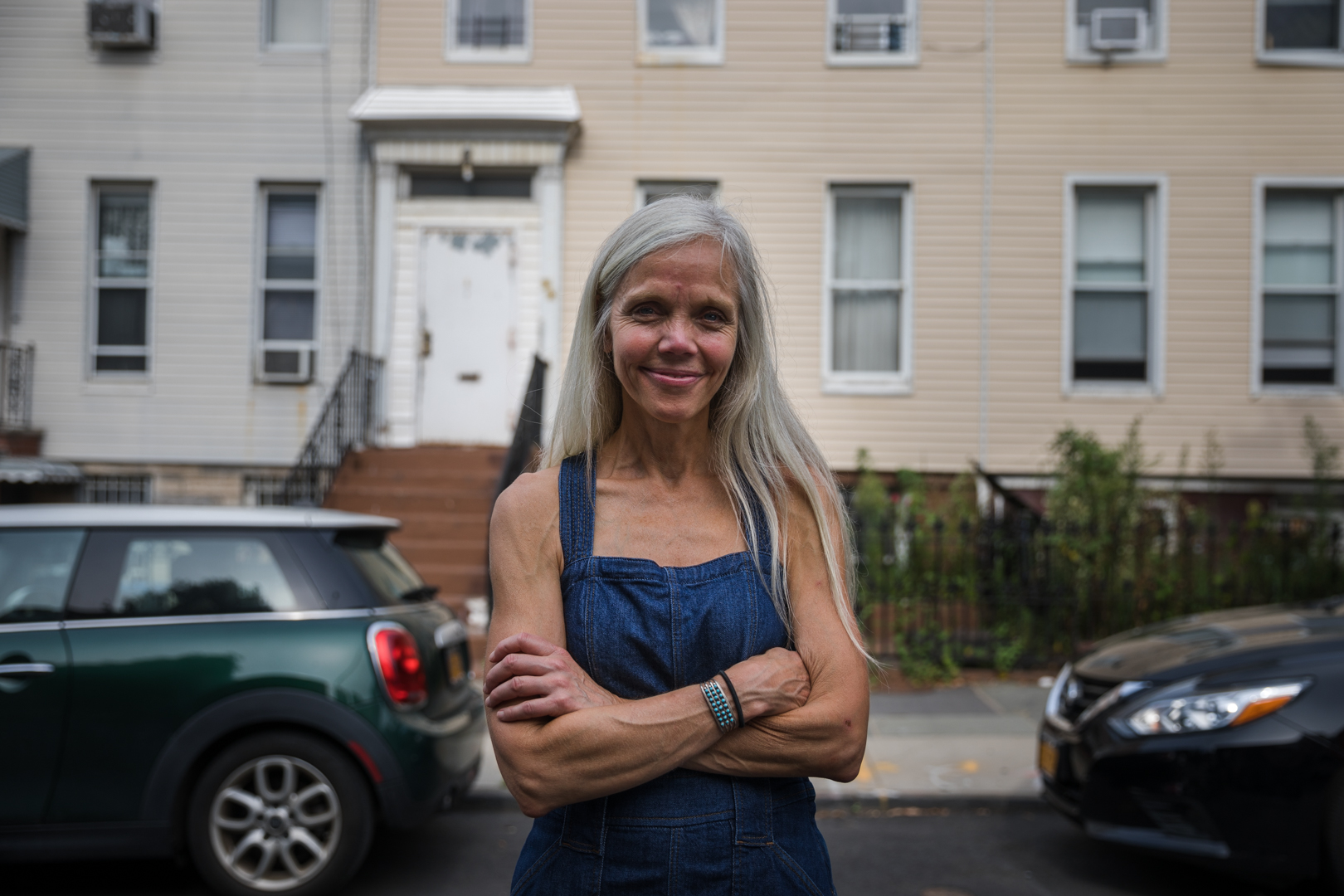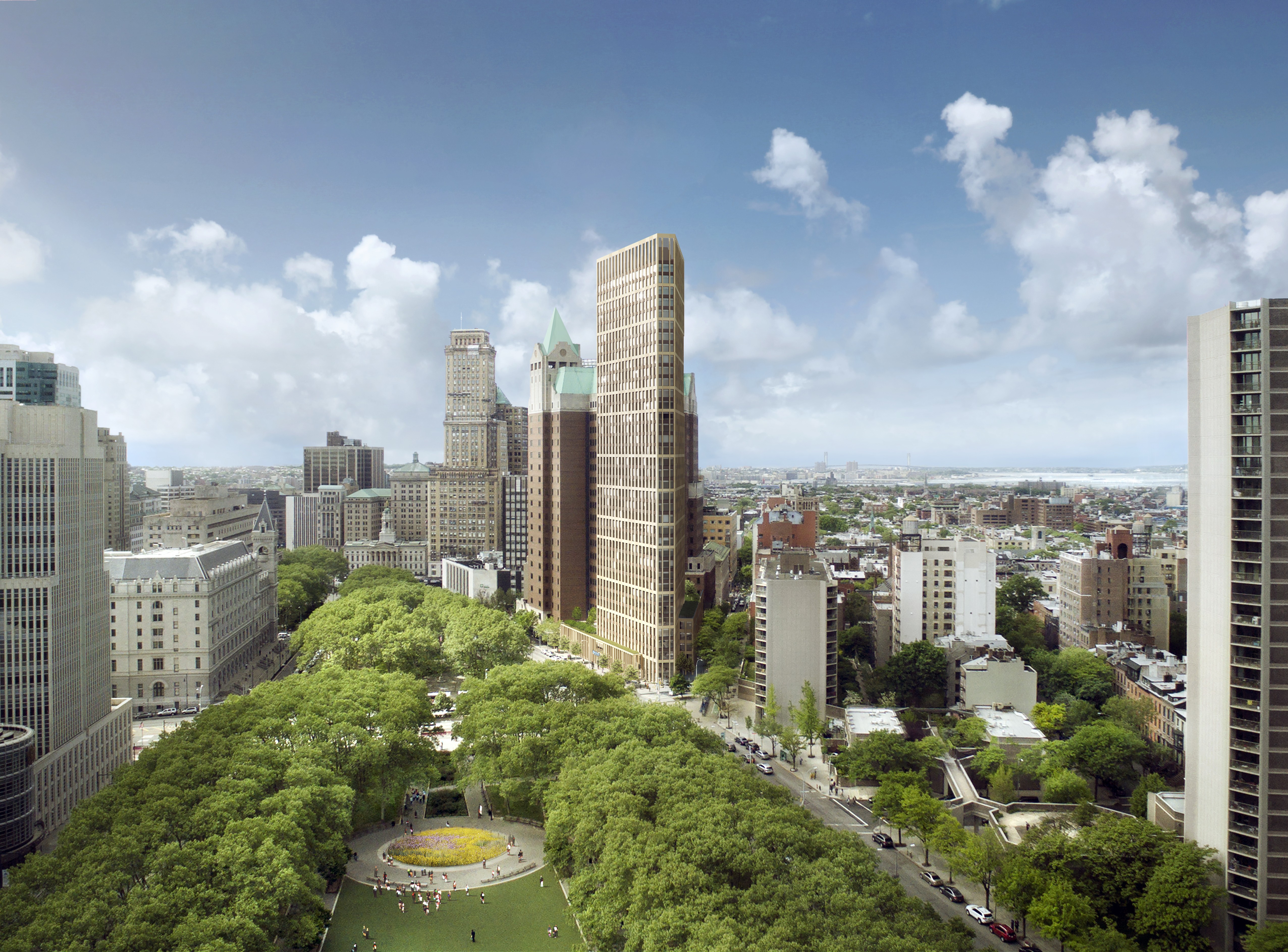A pilgrimage to Walt Whitman’s Clinton Hill home

Professor Karen Karbiener stands in front of 99 Ryerson St., where Walt Whitman lived. Eagle photo by Paul Frangipane
Preservation advocates are using the co-naming of a Clinton Hill street as Walt Whitman Way as an occasion to spotlight their campaign for city landmark designation for the poet’s home, which stands nearby.
“This humble house is the birthplace of our cultural Declaration of Independence,” New York University Professor Karen Karbiener, who’s the president of the Walt Whitman Initiative, told the Brooklyn Eagle.
After the City Council’s July 23 vote to put Whitman’s name on the corner of Ryerson Street and DeKalb Avenue, she led a pilgrimage to Whitman’s house at 99 Ryerson St. for her Columbia University summer students.
